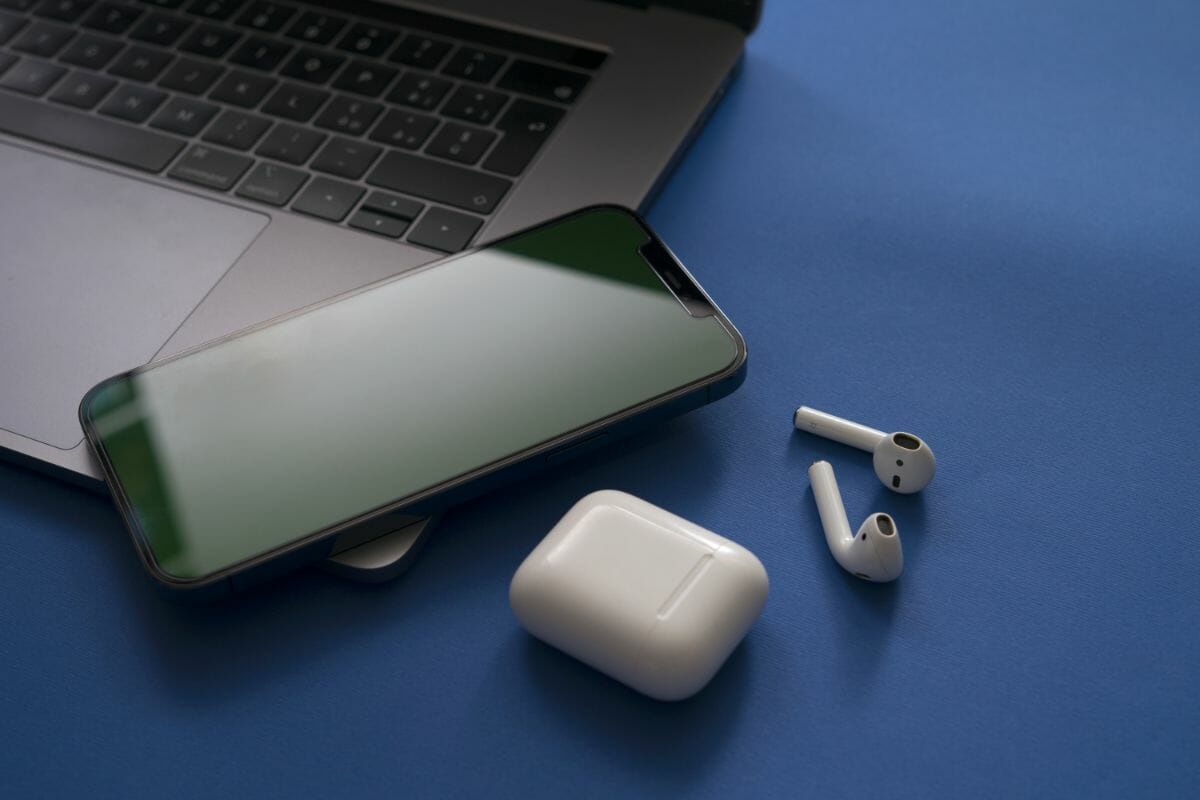AirPods are an incredibly popular accessory – and for good reason. They are small, and convenient, and allow you to enjoy your favorite music, podcasts, videos, and media no matter where you may be.

Learning how to manage them properly – including how to turn them off when not in use – can be essential, and can help to prolong the life of your products.
What Are AirPods?
AirPods are wireless headphones that connect via Bluetooth with a device such as an iPhone or iPad. The AirPods themselves have a battery that lasts up to five hours on a single charge.
When paired with an iOS device, they will automatically sync any audio files stored on the phone to the AirPods (see also ‘How To Turn Off Notifications On AirPods‘).
This means that if you’re listening to something on Spotify, for example, it will play through the AirPods without having to switch devices. You can also control playback from the AirPods by using Siri.
How Do I Pair My AirPods With An Apple Device?
To pair your AirPods with an Apple device, simply open the Settings app on your iPhone or iPad, then tap Bluetooth.
Tap Add New Device, then select AirPods (see also ‘How To Rename Airpods‘) from the list of available devices. If you don’t see your AirPods listed, make sure they are turned on and connected to Wi-Fi.
What Are The Advantages of AirPods?
There are a number of advantages to AirPods, and these include:
There Are No Wires To Worry About
One of the biggest benefits of AirPods is that there are no wires to worry about. There’s nothing to get tangled up in, so you won’t need to worry about getting caught up or confused while listening to music.
They Can Be Used For Multiple Devices
Because AirPods are designed to work with multiple devices, you can listen to music on your iPhone, watch movies on your iPad, and even take calls on your MacBook Pro all at once.
They Have A Long Battery Life
The battery life on AirPods is impressive. Most users report that they can last up to five hours on one charge. That’s longer than most other wireless headphones (see also ‘Is It Illegal To Drive With Headphones?‘).
They Are Small And Lightweight
Because AirPods are so lightweight, you’ll never feel like they are weighing down your head. In fact, many people find them comfortable enough to wear throughout the day.
You Can Use Them While Doing Other Activities
Another benefit of AirPods is their ability to be used while doing other activities.
Whether you are running around town, working out, or just relaxing, you can still hear what’s going on around you thanks to the built-in microphones (see also ‘Where Is The Microphone On My AirPods?‘).
How To Get Started With Your AirPods
When you first receive your AirPods, you’ll want to set them up before you start using them. To do this, follow these steps:
- Open the Settings app on your iOS device.
- Tap General.
- Scroll down until you reach Bluetooth.
- Select AirPods from the menu that appears.
- Press the button on each Air Pod to activate the pairing process.
- Once both AirPods are activated, you should see a blue light appear near the top of the right earpiece.
- Now, whenever you want to turn on your AirPods, press the button on either side of the right earpiece twice (if you want more information about turning off airpods, read here).
- After you’ve done this, you’ll notice that the blue light turns green.
How Do I Turn My AirPods On And Off?
Despite their many advantages, one of the main criticisms that often comes alongside AirPods is that they cannot be turned off when not in use, as they do not possess a power button to independently turn the power off.
This is because Apple designed their AirPods to be ready to use, enjoy and operate at a moment’s notice – essentially, each and every moment that you want them to be ready for you, they will be available.
This can result in concerns from some users about the length of battery life. AirPods charge when they are in the case, and this allows them to remain ready for use at a moment’s notice.
There are a few tips that you can try to conserve and extend the lifespan of your AirPods, and these include:
Use One AirPods At A Time
One option to extend the battery life of your AirPods is to use one AirPods at a time, rather than having both connected simultaneously (see also ‘Why Do My AirPods Keep Disconnecting?‘).
When using only one AirPod, it will consume less energy and therefore have more time to recharge.
Keep The Case Charged
It is important to ensure that you keep the case charged at all times – if your AirPods case does not have charge, it will not be able to charge the AirPods when they are put away.
You should note that you are able to switch your AirPods to a different case to keep them charged and ready – provided that this also has charge – so it can be useful to ensure that you have a spare just in case of any unexpected emergencies or shut-downs.
Once the AirPods have been charged to 100% (see also ‘How Long Do AirPods Take To Charge?‘), the case will automatically stop charging them, and simply act as a protective case to keep your ‘pods safe and secure.
Put Them Away Properly
One of the best things you can do to conserve the life of your AirPods is to make sure that you put them away properly when not in use – this will ensure that any audio that you are listening to stops automatically, and will also ensure that your AirPods are charging as they should while they are not in your ears.
Final Thoughts
AirPods are an excellent addition to anyone’s daily routine – if you want to listen to music without being tethered to a smartphone or other portable device, this is the perfect option for you.
They offer a convenient way to listen to music, but there are a few ways to improve upon their performance and longevity and ensure that you can enjoy your AirPods for as long as possible. Unfortunately, simply turning Airpods off isn’t an option, so hopefully, I gave you a few options that will help.






